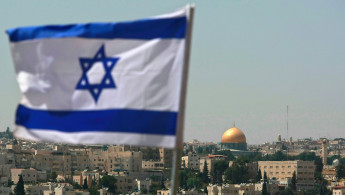Erasing the Green Line: Israel approves 3,700 settlement units south of Jerusalem
The Israeli Jerusalem municipality's construction and planning committee on Wednesday approved the building of 3,700 settlement units south of Jerusalem.
The construction plan targets the south and southeast of Jerusalem, between the occupied east of the holy city and the West Bank city of Bethlehem, which is under the administration of the Palestinian Authority.
The new settlement plan would "further cut the continuity between Jerusalem and Bethlehem", Khalil Tafakji, the head of the maps unit at Jerusalem's Orient House and an expert on Israeli settlements in Jerusalem, told The New Arab.
According to Tafakji, the new Israeli settlements have "a specific political goal, which is to effectively erase the Green Line, Israel's 1948 boundaries".
Tafakji said that much of the building is "planned right over the Green Line, by linking Israeli settlements in Jerusalem with those North of Bethlehem, especially some 1,500 units between the settlement of Ramat Rachel, in Western Jerusalem, and the settlements of Har Homah and Givaat Hamatosh, in the West Bank".
A new settlement neighborhood w/ almost 1500 units will connect the controversial settlement neighborhoods Har Homa and Givat Hamatos.
— Daniel Seidemann (@DanielSeidemann) January 5, 2022
1st new settlement neighborhood in E Jerusalem since Har Homa in the late 90s, and will contribute to creating a buffer betw E Jslm & Bethlehem https://t.co/9lHxOkGUZO pic.twitter.com/eLY5MaqL0b
Tafakji said the plan will also have "an important economic impact on the Palestinian city of Bethlehem".
"Settlement plans in this area include hotels and resorts designed to absorb the economic movement that comes to Bethlehem," he added.
Jamala Jumaa, coordinator for Stop The Wall, a Palestinian campaign against Israeli settlements, told The New Arab that "the Palestinian neighbourhood of Sur Baher would be separated from Jerusalem by new settlement units".
This will have a demographic impact on the Jerusalem area, Jumaa said.
"[It] also means at least 15,000 Israeli settlers more in Jerusalem's municipal boundaries, and on Palestinian occupied land. It is a clear daylight violation of international law," Jumaa added.
Israel occupied East Jerusalem in June 1967 and annexed it in 1981, in a move widely considered as illegal.
Both the eastern and the western sectors of Jerusalem have international status under international law until a political settlement to the conflict is reached.
Israeli settlements in East Jerusalem are considered illegal by much of the international community, including the US.
Under the fourth Geneva convention, regulating cases of armed conflict, an occupying power is not allowed to transfer its civilian population to occupied territory.
This includes a new neighborhood with 1,465 housing units intended to connect the settlement of Har Homa with Givat Hamatos and complete the Israeli southern ring that blocks continuum between Palestinian neighborhoods in East Jerusalem and Bethlehem. https://t.co/8YjJVv1dI3
— Mairav Zonszein מרב זונשיין (@MairavZ) January 5, 2022
Earlier in November, Israel approved some 11,000 settlement units, north of Jerusalem, completing the encirclement of the city from the Palestinian Territories.
Tahseen Alian, a legal expert at Al-Haq organisation, said: "These plans follow the Israeli refusal to reopen the US consulate in East Jerusalem.
"Together, all these Israeli decisions are a clear Israeli message that on the ground, international law means nothing.
"Palestinians can get that message too."





 Follow the Middle East's top stories in English at The New Arab on Google News
Follow the Middle East's top stories in English at The New Arab on Google News


